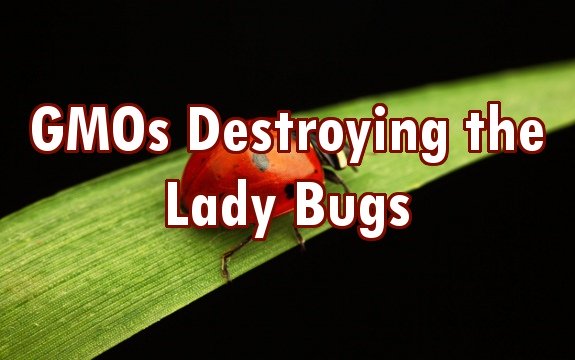GMOs are Killing our Lady Bugs, Attacking Biodiversity

 Lady bugs are part of a rich organic gardening and farming heritage. A second grader can do a report about why they are important to our biodiversity and overall food supply. They get rid of numerous agricultural pests, including aphides and mites without posing other risk to human health. But while their bright red and black spots signify that they are toxic to predators, it turns out that Monsanto’s herbicide RoundUp and glyphosate-resistant crops are toxic to them. Cry1Ab toxins (B. thuringiensis) found in GMO crops are killing our lady bugs.
Lady bugs are part of a rich organic gardening and farming heritage. A second grader can do a report about why they are important to our biodiversity and overall food supply. They get rid of numerous agricultural pests, including aphides and mites without posing other risk to human health. But while their bright red and black spots signify that they are toxic to predators, it turns out that Monsanto’s herbicide RoundUp and glyphosate-resistant crops are toxic to them. Cry1Ab toxins (B. thuringiensis) found in GMO crops are killing our lady bugs.
According to a study conducted by the Swiss Federal Institute of Technology and Institute of Integrative Biology:
“When repeating the feeding experiments with the Bt toxin Cry1Ab using a combined protocol of both previous studies, again, a lethal effect on A. bipunctata larvae was observed. ELISA tests with Bt-toxin fed larvae and pupae confirmed ingestion of the toxin.”
In this very same study it was found that Bt toxins increase lady bug mortality by killing their larvae. The toxin that was cross-bred with GM crops to be resistant to pests is also killing one of nature’s biggest pest controllers.
Read: 5 Beneficial Bugs that Could Help Your Garden
Bt toxins are prominent in genetically altered crops such as corn, soy, wheat, and others, called Cry1Ab – and they can be lethal. Not only do these cry-toxins target the kidney cells of developing human fetuses, but when Cry1Ab and Cry1Ac are combined with RoundUp, they can delay apoptosis of human cancer cells. What’s worse, glyphosate, the main ingredient in RoundUp, also causes necrosis – i.e. the death of human tissue, and this happens even when the substance is found in much smaller amounts than what is currently being used on our agricultural crops. The stuff is still carcinogenic in the parts per trillion range.
If you want to save the lady bugs, don’t spray pesticides or herbicides on your plants. If you buy lady bugs commercially to disperse in your garden, you also need to provide them ample food by having lady-bug friendly plants (dill, fennel, dandelion, coriander, Hairy vetch, yarrow, butterfly weed) that they can dine on when they are done overwintering. You can also mix brewer’s yeast with a little sugar, honey, and warm water to offer them a respite before they start munching on the insects that would munch on the crops you’ve planted.
Cry toxins are also associated with human red blood cell damage and leukemia. Looks like lady bugs and people alike need to look out for Mansanto’s Bt poison.
